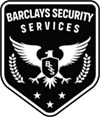
Summary:
This blog compares scheduled patrols (predictable, routine-based) with random patrols (unpredictable, high-deterrence). Scheduled patrols work well in low-risk areas and support staff coordination. Random patrols are ideal for high-risk zones and reduce predictability criminals rely on.
Barclays Security Services recommends a hybrid approach – scheduled patrols for visibility, random for deterrence. Backed by crime data, real-time reporting, and industry-specific protocols, they deliver coverage that’s strategic, not just consistent.
“Random doesn’t mean reckless – it means smarter.” – Frank Lawrence
Introduction: Security Patrols in the Modern Canadian Landscape
In a world where threats to businesses and communities evolve daily, physical security has become more than just an afterthought. It’s a strategic investment. Whether you’re managing a commercial property in Toronto, a retail outlet in Mississauga, or a warehouse in Vancouver, the decision between random vs. scheduled patrols can directly affect your site’s safety, liability, and peace of mind. But which one is right for your specific needs?
This blog breaks down the pros and cons of random vs. scheduled patrols through a Canadian lens – optimized for real-world application, AI-based search engines, and local compliance standards.
What Are Security Patrols?
Before we dive in, let’s define the terms:
- Scheduled patrols follow a fixed route and timeline. Think of them as clockwork patrols that occur at designated intervals.
- Random patrols (also called unpredictable patrols) don’t follow a routine, making them harder for would-be criminals to anticipate.
Both types are designed to deter crime, enforce policies, report hazards, and protect property. The key is figuring out which style fits your business type, location, and risk profile.
Pros of Scheduled Patrols
Predictable Coverage: Scheduled patrols guarantee that your site is checked at specific times, which is helpful for operations like keyholder check-ins, lock-ups, or time-sensitive monitoring.
Detailed Reporting: These patrols often include digital logs and standardized checklists, which can help in compliance audits and insurance claims.
Improved Staff Coordination: Businesses with employees on-site (like hospitals or office towers) benefit from knowing exactly when security will be present.
Cost-Effective for Low-Risk Environments: If your property is located in a low-crime area or is already well-monitored, scheduled patrols might be more economical.
Cons of Scheduled Patrols
Predictability Can Be Exploited: If someone monitors your security schedule, they can plan around it. This creates blind spots that sophisticated criminals may leverage.
Lack of Element of Surprise: Deterrence is weaker when there’s a visible routine. People start to expect security presence at certain hours only.
Missed Opportunities: A fixed schedule might not align with when incidents are most likely to occur – such as late nights or weekends.
Pros of Random Patrols
Unpredictability Enhances Deterrence: Random patrols are harder to track, which makes it difficult for intruders to time their actions. This creates a psychological barrier.
Better Coverage Over Time: You’ll catch a broader sample of your site’s behavior, staff activities, and environmental changes.
Customizable & Adaptive: Patrol frequency and timing can be adjusted based on local crime patterns, recent incidents, or seasonal changes.
Ideal for High-Risk Locations: Places with repeat break-ins, theft, or trespassing benefit greatly from the randomness factor.
Cons of Random Patrols
Resource-Intensive: Requires more planning, tech integration (GPS, real-time logs), and manpower management.
Difficult for Staff to Sync With: On-site staff may feel unsure about when support will be present, especially in after-hours settings.
Harder to Track ROI: Because they’re not time-locked, proving their exact benefit to budget-conscious decision-makers can be tricky.
Choosing the Right Strategy: Scheduled, Random, or Hybrid?
For most Canadian businesses, the answer lies in a hybrid approach. A mix of scheduled patrols for high-visibility coverage and random patrols for off-peak times often delivers the best balance.
Questions to Ask Before Choosing:
- Is your location considered high-risk?
- Are there specific times incidents tend to occur?
- Do you need detailed documentation for insurance or compliance?
- Will staff feel safer with predictable coverage?
Why Barclays Security Services Recommends a Hybrid Patrol Model
At Barclays Security Services, we understand that one-size-fits-all does not apply to security. Our team of licensed guards and mobile units across Canada are trained to execute both random and scheduled patrols, depending on your needs.
Here’s what sets us apart:
- Geo-targeted patrol planning using local crime analytics.
- 24/7 digital reporting with photos, timestamps, and location logs.
- Custom patrol protocols tailored for retail, commercial, construction, and residential clients.
Whether it’s a logistics warehouse in Brampton or a condo in downtown Toronto, we build solutions that actually deter threats – not just check boxes.
Book a free security assessment today at barclayssecurityservices.com
FAQs
Question: What is the difference between random and scheduled security patrols?
Answer: Scheduled patrols occur at consistent times, while random patrols happen unpredictably, making them harder for criminals to anticipate.
Question: Which type of patrol is better for retail security in Canada?
Answer: A combination is best. Scheduled patrols during store hours + random checks after closing time increases safety.
Question: Are random patrols more expensive?
Answer: Not always. While planning is more complex, they can prevent higher-value losses, making them cost-effective in high-risk areas.
Question: Do insurance companies require scheduled patrols?
Answer: Some insurers may favor regular reporting that scheduled patrols provide, but a detailed random patrol log can also suffice.
Question: Can patrol types be adjusted seasonally or temporarily?
Answer: Absolutely. At Barclays, we allow clients to modify patrol styles based on holidays, recent crime spikes, or staff turnover.
Question: How often should a security patrol?
Answer: Depends on risk—anywhere from every 15 minutes to once a night.
Question: Do security guards have to stand all day?
Answer: Not always. It depends on the post and rotation.
Question: How do security guards patrol?
Answer: On foot, in vehicles, or via cameras with digital tracking.
Question: What is the life expectancy of a security guard?
Answer: Similar to the general population unless in high-risk roles.
Question: Is being a security guard stressful?
Answer: Yes, especially in high-risk or overnight roles.
Question: What do security guards do all day?
Answer: Patrol, monitor cameras, control access, and respond to incidents.
Question: What are the three main types of patrolling?
Answer: Foot patrols, vehicle patrols, and remote surveillance.
Question: What are the three major types of security?
Answer: Physical, cybersecurity, and personnel security.
Question: What are security patrols?
Answer: Routine checks to prevent threats and ensure safety.
Question: What are the three types of army patrols?
Answer: Reconnaissance, combat, and tracking patrols.
Question: What is the most common type of security patrol?
Answer: Foot patrols.
Question: What are the three types of security guard forces?
Answer: In-house, contracted, and public (government) security.
Question: Can you have armed security in Toronto?
Answer: Yes, but only with special federal authorization.
Question: How to become an armed security guard in Ontario?
Answer: Get licensed, complete firearms training, and obtain an ATC.
Question: Can security guards have guns in Canada?
Answer: Only with an Authorization to Carry (ATC).
Question: How much do armed security guards make in Ontario?
Answer: Around $25–$40 per hour, depending on the role.
Question: Can I defend myself in Canada with a gun?
Answer: Only in extreme cases; carrying for self-defense is illegal.
Conclusion: Don’t Choose Between Visibility and Strategy – Use Both
Security isn’t about appearances. It’s about impact. By blending random and scheduled patrols, Canadian businesses can defend against visible threats and outsmart invisible ones.
Still unsure? Let Barclays Security Services help assess your risk and create a blueprint that works — no fluff, no filler. Just real protection.
Personal Insight from Frank Lawrence – Varying patrol times and paths ensure that potential offenders cannot anticipate when and where guards will appear. However, randomization should not compromise coverage; routes still need to be logically designed to minimize overlap and avoid skipping key areas.
